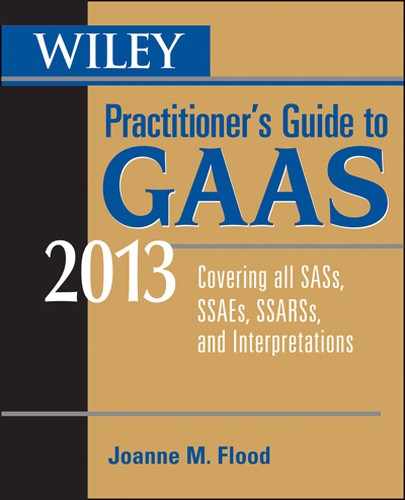PCAOB 6: Evaluating Consistency of Financial Statements1
EFFECTIVE DATE AND APPLICABILITY
| Effective Date | This standard currently is effective. |
| Applicability | Engagements conducted pursuant to Public Company Accounting Oversight Board (PCAOB) standards, including an audit of financial statements, an audit of internal control over financial reporting, and a review of interim financial information. |
DEFINITIONS OF TERMS
Change in accounting principle. A change from one generally accepted accounting principle (GAAP) to another when there are at least two applicable GAAPs, or when the accounting principle formerly used by an entity is no longer generally accepted. A change in accounting principle also arises when there is a change in the method of applying an accounting principle.
Change in reporting entity. A change resulting in financial statements that are now those of a different reporting entity.
Current period. The most recent year, or a period of less than one year, upon which the auditor is reporting.
OBJECTIVES OF PCAOB STANDARD 6
PCAOB Auditing Standard 6 sets forth the general requirements for evaluating the consistency of an entity’s financial statements. The Standard’s scope includes the evaluation of changes to an entity’s previously issued financial statements, and the impact of this evaluation on the auditor’s report.
FUNDAMENTAL REQUIREMENTS
Basic Requirement
The auditor should identify whether the comparability of an entity’s financial statements between periods has been materially affected by changes in accounting principles or material adjustments to financial statements that were issued for previous periods.
The auditor’s evaluation of comparability only applies to those financial statements covered by the auditor’s report. However, when the auditor’s report only applies to the current period, the auditor should evaluate whether the current period financial statements are consistent with the statements for the immediately preceding period.
For example, ABC Company presents comparative financial statements covering three years, and changes auditors. For the new auditor’s first year, the auditor evaluates consistency between the year on which he or she is reporting and the preceding year. In the new auditor’s second year, the evaluation encompasses the two years on which he or she is reporting, and between those years and the earliest year presented.
When conducting a consistency evaluation, the auditor should take note of changes in accounting principle and adjustments to correct misstatements in previously issued financial statements, but only if these changes have a material effect on the financial statements.
Changes in Accounting Principle
The auditor’s evaluation of a change in accounting principle should determine whether:
- A newly adopted accounting principle is a GAAP;
- The method of accounting for the effect of the change conforms to generally accepted accounting principles;
- The disclosures of the accounting change are adequate; and
- The entity has justified that the alternative accounting principle is preferable to the one it replaces.
If the auditor concludes that the preceding criteria have been met, then he or she should add an explanatory paragraph to the auditor’s report, as noted in AU Section 508, Reports on Audited Financial Statements. If these criteria are not met, then the accounting change is a departure from GAAP and should also be addressed in accordance with AU Section 508.
If there is a change in accounting estimate effected by a change in accounting principle, the auditor should evaluate and report on this in the same manner as for other changes in accounting principle.
If there is a change in reporting entity, the auditor should include an explanatory paragraph in the auditor’s report. However, if the change in reporting entity is caused by a transaction or event (such as the creation, cessation, or purchase or disposition of a subsidiary), then the auditor does not need to describe the change in his or her report.
Correction of a Material Misstatement
If an entity corrects a material misstatement in its previously issued financial statements, the auditor should recognize this in the auditor’s report with an explanatory paragraph, in accordance with Section 508. If the entity has not provided sufficient disclosure of the misstatement, then the auditor should address the issue in accordance with AU Section 431, Adequacy of Disclosure in Financial Statements.
Change in Classification
An entity’s change in classification in previously issued financial statements requires no recognition in the auditor’s report, other than the previously noted corrections of material misstatements or changes in accounting principle. If a material change in classification is also a change in accounting principle or a correction of a material misstatement (such as shifting debt between the long-term and short-term classifications), then the auditor should address the issue in accordance with AU Section 508.
1 Practitioners should reference the additional guidance listed in the section “Other PCAOB Guidance” in this volume’s chapter PCAOB 1.
